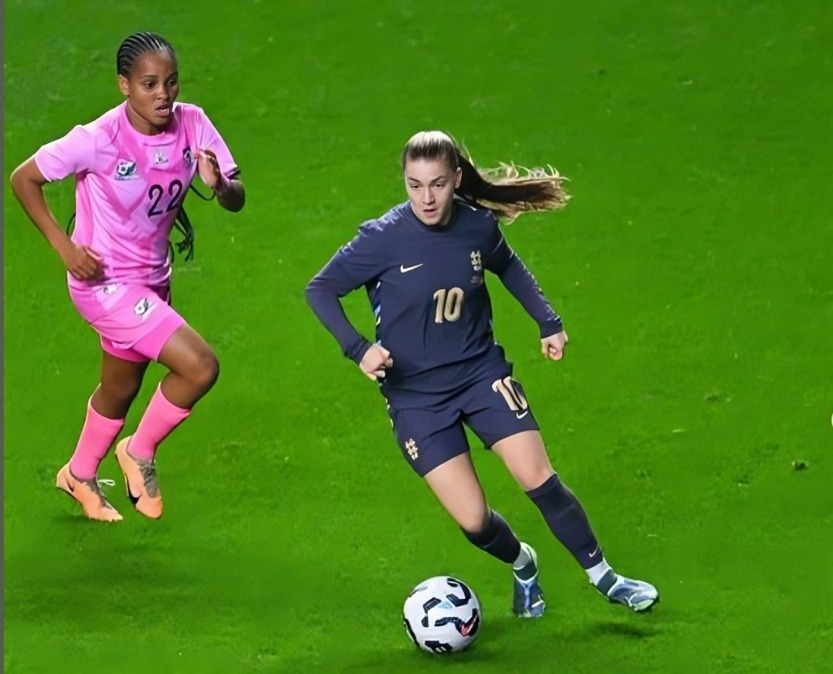The recent friendly between England and South Africa at Coventry’s Building Society Arena saw the Lionesses secure a narrow 2-1 victory in a match filled with excitement and some unexpected turns. This game comes at a time when the English side is experimenting with different player line-ups and preparing for more competitive fixtures in the coming months.
Strong Start but Missed Opportunities
England came out strong, with an early goal from captain Leah Williamson in the 12th minute, showcasing her leadership on the pitch and sending a powerful message to South Africa. This set the tone for the match as England’s players continued pressing forward, trying to expand their lead. Just a few minutes later, Grace Clinton extended England’s advantage with a well-placed goal in the 23rd minute, capitalizing on a defensive error by the South African squad.
Despite these goals, the Lionesses struggled to convert several more chances throughout the game. Ella Toone nearly added a third, but South Africa’s keeper, Andile Dlamini, proved to be a formidable opponent, blocking the attempt and keeping the score within reach for South Africa.
South Africa’s Second-Half Comeback
After a shaky first half, South Africa regrouped and returned to the field with renewed energy. Their persistent efforts paid off when striker Thembi Kgatlana scored in the 55th minute, bringing the score to 2-1 and shifting the momentum. Kgatlana’s goal reignited South Africa’s determination, putting England’s defense under pressure and providing fans with an intense, fast-paced second half.
This was a reminder for England’s head coach Sarina Wiegman about the importance of a resilient defense, especially when facing an opponent who can turn the game around with speed and precision. Wiegman acknowledged that, despite the victory, there are areas where the team can improve, particularly as they aim to strengthen their squad ahead of the upcoming double-header against the United States and Switzerland.
New Faces and Tactical Shifts
Wiegman made a series of tactical changes, introducing younger players to the mix and testing various formations to assess how each combination performs under different pressures. For example, Clinton’s inclusion in the lineup is part of a broader strategy to integrate fresh talent, preparing them for larger tournaments where experience on the international stage becomes crucial.
By experimenting with both seasoned players and newcomers, Wiegman hopes to identify the best tactical approaches as England prepares for the 2025 UEFA Women’s Championship. This match against South Africa highlighted some successful combinations but also exposed the need for adjustments, particularly in defensive transitions.
Challenges and Expectations
Following this friendly, England has a packed schedule that includes more high-stakes friendlies and qualifiers, all intended to shape the team into a cohesive and dynamic unit. Their upcoming matches against Switzerland and the United States will provide another opportunity to implement learnings from the South Africa game.
Wiegman’s focus appears to be on solidifying a lineup that balances youth and experience, ensuring the Lionesses remain a dominant force in women’s football. Meanwhile, South Africa’s performance in this friendly has shown that they are a team to watch in the coming years, as their disciplined play and quick adaptations demonstrate their growing strength on the international stage.
In summary, England’s recent win against South Africa is a positive step, though it also serves as a reminder that there is work to be done before facing some of the world’s top teams. As Wiegman and her squad look ahead to further fixtures, the lessons from this game will undoubtedly play a role in shaping a resilient and adaptable team.
